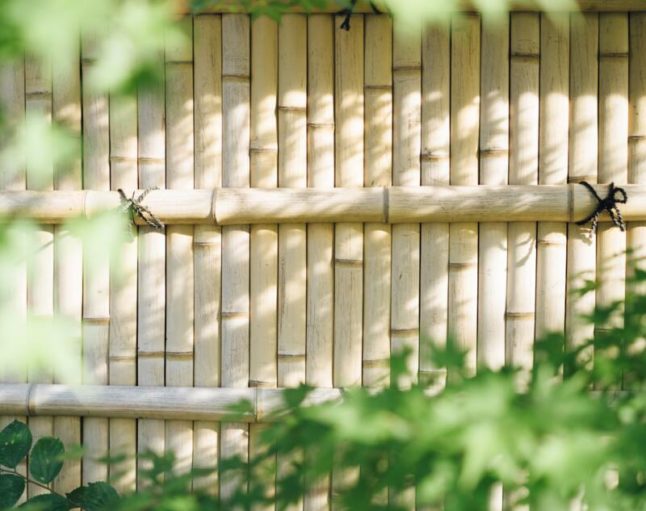All Categories
Featured

A fencing functions as greater than just a limit; it gives personal privacy, safety and security, and improves the aesthetic charm of your residential property. Nevertheless, like any kind of outside framework, a fencing will undoubtedly face deterioration from the aspects and age. While regular maintenance can prolong the life of your fence, there comes a time when repair work no longer suffice, and it's time to consider substitute. How do you understand when your fence is beyond saving? Below are some key indications that your fence might require to be changed.
- Noticeable Damages or Wear. Among one of the most apparent indications that your fence is nearing completion of its life expectancy shows up damages. This can include splits, splits, warping, or busted sections. Wooden fences are particularly susceptible to splitting or splintering over time, while plastic fences can establish splits. Steel fencings, like chain-link or functioned iron, can likewise become damaged with corrosion or curved blog posts. If the damage is extensive or structural, repairing specific sections may not be enough, and replacing the fencing ends up being essential.
- Rot and Degeneration. Wood fencings are especially prone to rot, particularly in areas with high humidity or regular rainfall. It can lead to degeneration when dampness gets entraped in the timber. If you notice that components of your fencing really feel soft to the touch or if you see mold and mildew or fungus growing, it's an indication of rot. Although minor rot can sometimes be repaired, considerable decay, especially near the base of fencing blog posts, can endanger the integrity of the entire fencing. In such cases, replacement is typically the very best choice.
- Leaning or Tilting. A leaning fence is a clear indicator that something is incorrect with its architectural support. With time, articles may shift as a result of soil erosion, water damages, or perhaps origin development from neighboring plants. While minor tilting can occasionally be dealt with by correcting the alignment of the articles and protecting them, extensive leaning frequently suggests that the articles have actually been damaged past repair service. If the fence remains to lean regardless of attempts at modification, it might be time to replace the damaged areas or the whole fence.
- Corrosion or Rust (For Metal Fences) While small corrosion can usually be eliminated and dealt with, extensive corrosion that jeopardizes the fencing's security is a sign that substitute is essential. It's much better to change a heavily corroded steel fencing than to continue attempting repair work.
- Parasite Infestations. Wooden fencings are a typical target for insects like termites, woodworker ants, and rodents. These parasites can create substantial damages by tunneling into the wood and compromising its structure. If you discover tiny openings, sawdust piles, or actual insects staying in your fencing, it's vital to address the problem right away. In cases where the damages is serious, the affected fence articles or boards may require to be changed to restore the fence's security.
- Trouble Keeping the Fencing. If you find yourself continuously making fixings to the same areas of your fence, it can be an indication that the fencing is past its prime. Fence upkeep can be expensive and time-consuming, especially when fixings are no more efficient. If you're spending more money on restoring old areas than you would certainly on a complete substitute, it's time to take into consideration replacing the fence completely. A new fence will provide even more long-term worth and reduce the regularity of repair work.
- Age of the Fencing. While the life-span of a fence can differ depending on the material, weather, and location problems, many fences last between 15 and 20 years. If your fencing is coming close to or surpassing its expected life-span and showing signs of wear and tear, it may be time to replace it.
- Obsolete Look. Sometimes, a fence merely becomes obsolete, no much longer matching the design or demands of your residential or commercial property. If your fencing no longer matches your building or satisfies your demands-- such as personal privacy, safety, or aesthetic appeals-- it may be time to think about a substitute.
- Fencing No More Serves Its Function. Your requirements for a fence can develop over time. In such instances, replacing the fence with one that satisfies your existing requirements is the ideal choice.

Final thought. If you observe any of the signs listed above-- visible damages, rot, leaning, pest infestations, or an out-of-date look-- it may be time to replace your fence. Changing an old, damaged fence can boost the general worth of your property, boost safety and security, and offer your lawn a fresh appearance.
Latest Posts
Experience the Montclare Commitment - Trusted Auto Repair
Published Apr 20, 25
2 min read
Comprehensive Auto Services at Montclare Auto Repair - See Our Offerings
Published Apr 20, 25
2 min read
Why Select WyHy Quick Trac Interest-bearing Accounts
Published Apr 20, 25
1 min read